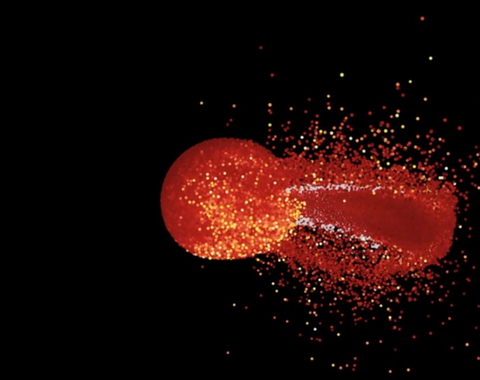By Conel Alexander
The origin of Earth’s water is an open question and quite controversial. It really is part of a larger question about how Earth got its very volatile elements that include not just the hydrogen in water, but also carbon, nitrogen, and the noble gases (helium, neon, argon, krypton, and xenon) amongst others. Ultimately, any complete explanation must be able to reproduce both the volatile element abundances and isotopic compositions. It must also be compatible with what we know about how and on what timescales planetary systems form from the disk of gas and dust (protoplanetary disk) that surrounds a young star. In the case of the Solar System, the protoplanetary disk around the young Sun is generally referred to as the Solar Nebula.
Currently, the most favored explanation for where the Earth got its water is that it acquired it from water-rich objects (planetesimals) that made up a few percent of its building blocks. These water-rich planetesimals would have been either comets or asteroids. From what we know about comets, they are not a good match to either the volatile element abundances or isotopic compositions of the Earth. It may also have been difficult to deliver enough comets to the Earth.
At present, asteroids up to a few hundred kilometers across seem the most likely sources of most of Earth’s water, specifically the types of asteroid that dominate the outer asteroid belt between Mars and Jupiter. We have pieces of some of these asteroids in the form of two types of carbonaceous chondrite meteorites—the CMs and CIs. When they formed, these asteroids/meteorites contained water-ice, but radioactive heating and impacts caused the ice to melt and react with the anhydrous minerals to make clays. The meteorites also contain quite a bit of organic matter that contains hydrogen, carbon, and nitrogen —the hydrogen would have reacted to form water when the asteroids vaporized on impacting the early Earth. Noble gases even seem to be associated with the organics.
The CM chondrites, in particular, match many aspects of Earth’s highly volatile elemental and isotopic compositions, although small amounts of cometary and solar wind (or Solar Nebula) material produce an even better fit. Nevertheless, disagreements between the meteorite-comet-solar and Earth compositions remain and there is much debate about whether these are due to some combination of (i) inaccuracies in the estimates of the Earth’s volatile contents, (ii) storage of hydrogen and other volatiles in the Earth’s core or deep mantle, and (iii) loss of volatiles to space in the giant impacts that dominated the final stage of Earth’s formation.
If CM- and/or CI-like chondrites were the main sources of Earth’s water, where did they come from? It looks like they are representatives of a swarm of planetesimals that formed in the colder regions of the Solar Nebula beyond the orbit of Jupiter where water-ice-rich dust was plentiful, and they were gravitationally scattered by a growing Jupiter into the regions where Earth and the asteroid belt formed.

